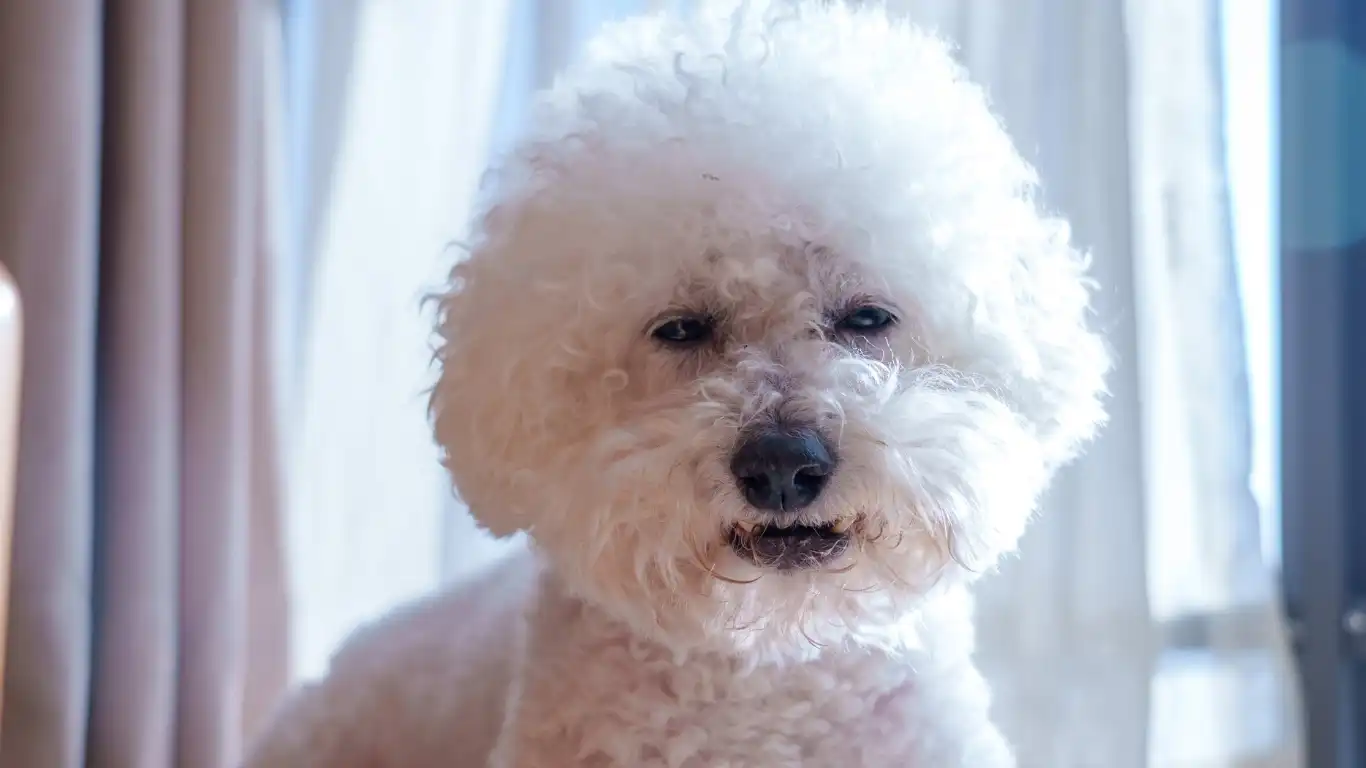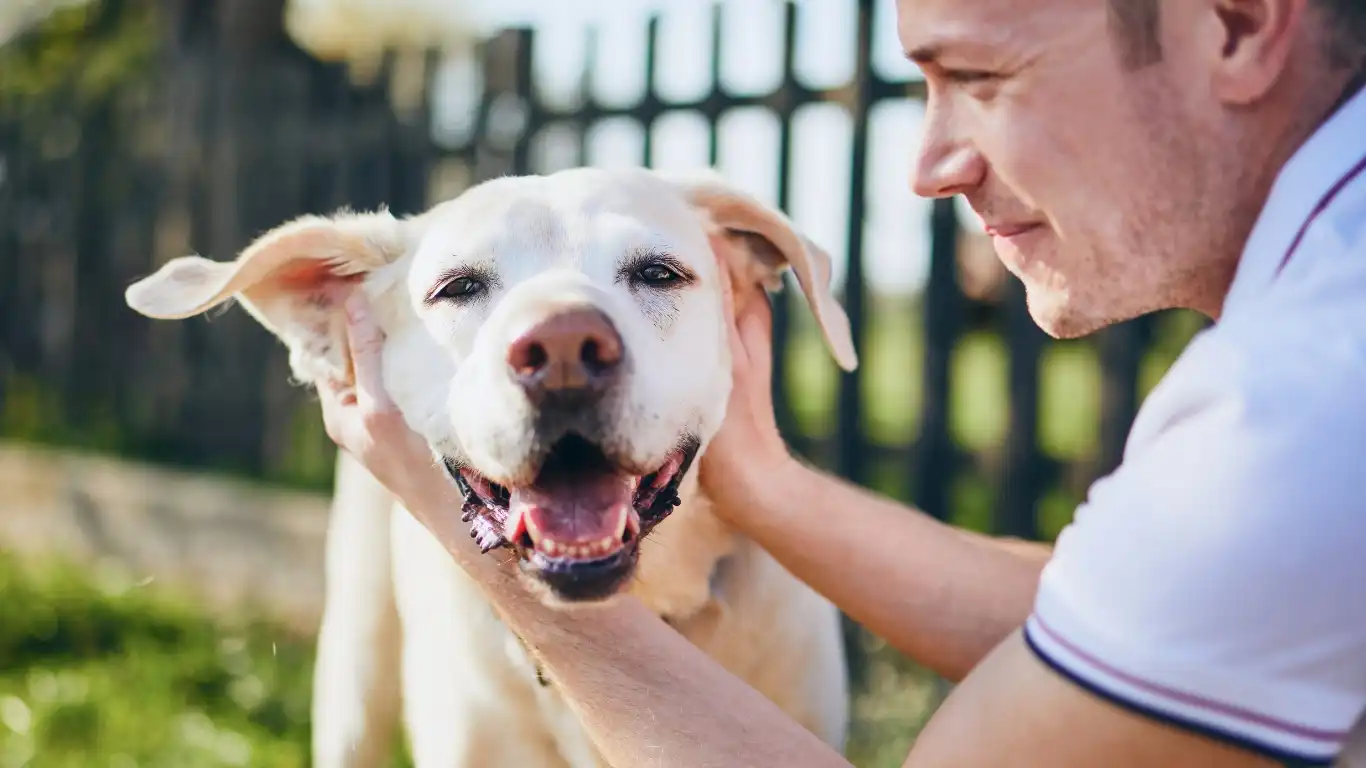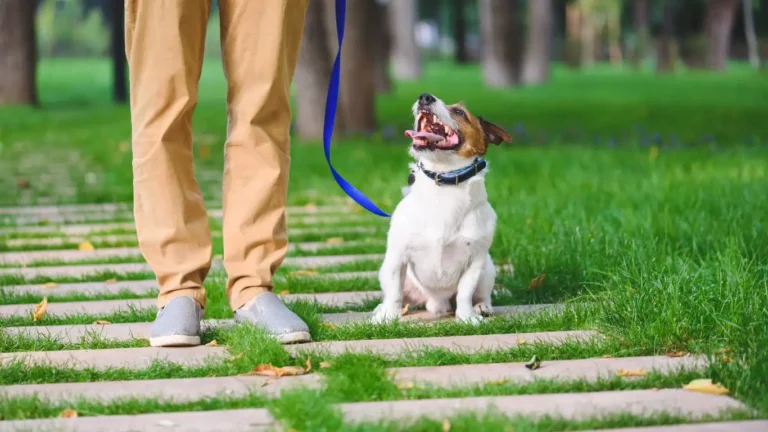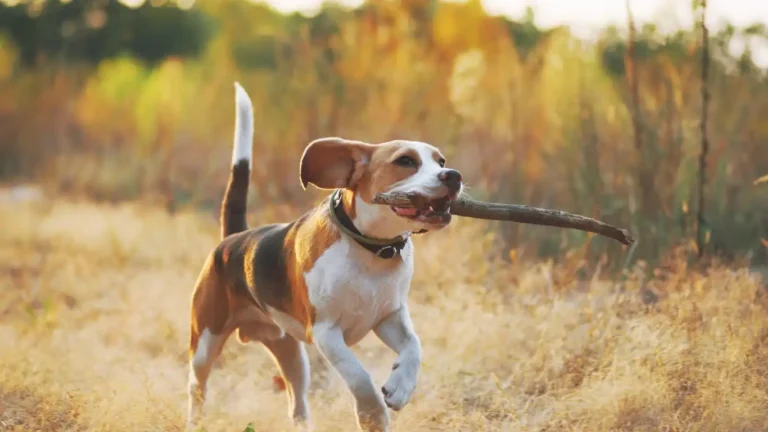Stop Excessive Dog Barking Fast: Proven Tips That Actually Work
Let’s be honest—learning how to train a dog not to bark excessively can feel like trying to convince a toddler not to yell “MOM” in the middle of a grocery store. I’ve seen it all in the clinic, from tiny yappers to deep-chested bark machines, and more often than not, pet parents are at their wit’s end by the time they come to us for help. But here’s the thing: barking is normal. It’s communication. The trick isn’t to stop it altogether—it’s about understanding why it’s happening and teaching your dog when it’s okay and when it’s not. I’ll walk you through the stuff I share with clients, plus some real-world insights from the treatment room.
Why Dogs Bark (And Why It Matters)

Dogs don’t bark just to annoy you—though I get it, at 2 AM, it definitely feels personal. Barking can mean a lot of things. It’s their way of saying, “Hey! Something’s up!” Sometimes it’s boredom. Other times, it’s anxiety, fear, territorial behavior, or just plain excitement. If you want to successfully figure out how to train a dog not to bark excessively, you’ve got to dig into what’s fueling the noise.
Common Bark Triggers
- Loneliness or boredom: Dogs are social creatures. If they’re left alone too long without mental or physical stimulation, barking becomes their outlet.
- Territorial instincts: The Amazon delivery guy? Your pup thinks he’s defending the castle. Totally normal, but it needs redirection.
- Fear or anxiety: Thunder, fireworks, or even being left alone can cause some dogs to bark out of nervousness.
- Attention-seeking: If barking gets a reaction—any reaction—it can become a learned behavior.
- Playfulness and excitement: Some dogs just get overly hyped. A leash, a ball, or the word “walk” sets them off.
Start With Observation, Not Correction

I always tell my clients—before you correct, observe. One of the most common mistakes I see (and yes, I’ve made it myself with my own dogs) is jumping straight into “No! Quiet!” mode without even knowing what the dog is trying to say. Your first job? Be a detective.
How to Track Behavior Patterns
- Keep a simple barking journal. Note down when the barking happens, what’s going on around your dog, and how long it lasts.
- Record a short video clip if possible. Watching your dog’s body language later can reveal things you missed in the moment.
- Notice your reactions too. Are you yelling? Rushing over? Ignoring it? Your response teaches your dog something every time.
This approach sounds simple, but it’s super powerful. I had a client once—sweet little Frenchie named Luna—whose barking only happened during Zoom meetings. Turns out, she didn’t like the voices coming from the laptop. We wouldn’t have figured that out without her owner doing a bit of observation work first.
Training Foundations That Actually Work

Okay, so now you’ve got a better idea of why the barking is happening. Let’s talk about how to start fixing it. There’s no one-size-fits-all method, but these foundational strategies have worked time and time again with my clients—and in my own home.
Use Positive Reinforcement (Always)
Dogs learn best when they’re rewarded for doing the right thing. So instead of scolding your dog for barking, reward them when they’re quiet. Seems backwards, I know, but hear me out. Reinforcing silence teaches them it’s a better option.
- Use treats, praise, or toys when your dog stops barking on command.
- Try a marker word like “Yes!” or clicker training to pinpoint the quiet moment.
- Keep sessions short and sweet—5-10 minutes tops. You’re building habits, not teaching calculus.
Teach the “Quiet” Command
This one takes patience, but it’s gold once it clicks.
- Wait for a moment when your dog is barking (yes, wait it out).
- Say “Quiet” in a calm, clear voice.
- As soon as they stop—even for a second—reward immediately.
- Repeat consistently. Over time, pair the word with your dog’s natural pause.
One trick I share often is using an old-school kitchen timer. Set it for 1 minute. If your pup stays quiet that long, boom—treat. It keeps your timing consistent, which is key for dogs who are just learning.
Don’t Accidentally Reward the Bark
This one trips up a lot of pet parents. Let’s say your dog barks because they want your attention, and you look at them or say “Stop it!” Guess what? You just rewarded them. Even negative attention is still attention in their eyes.
So what do you do? Stay calm. Don’t make eye contact. Wait for the quiet, then reward. That flips the script completely.
Setting Realistic Expectations for Bark Training

Here’s something I often remind folks who come into the clinic, exhausted and frustrated: changing barking behavior doesn’t happen overnight. I get it—when your dog’s voice box seems to be set to “max volume,” it’s tempting to look for a quick fix. But honestly, the most progress I’ve seen with clients came from staying consistent and being just a bit more patient than they thought they could be.
Think of it this way: your dog isn’t being “bad.” They’re being a dog. Barking is natural. What we’re doing is teaching them new communication rules in a human world—and that takes time. I always say, give it a few weeks of solid work before expecting big shifts. And celebrate the small wins! Even a few seconds of quiet during a known trigger moment is progress.
How Long Does It Really Take?
Honestly, it depends on your dog’s age, breed, personality, and how ingrained the barking habit is. Puppies learn faster but bark more. Older dogs can learn too—it just takes more repetition. I worked with an 8-year-old Beagle named Jasper who had barked at every squirrel for most of his life. With patience and a creative reward system (he loved boiled chicken), we saw major improvement in just under two months.
Environmental Setups That Help Reduce Barking

Sometimes the best training move you can make is actually a setup change. Before you even ask for “quiet,” you can make your dog’s space less likely to provoke barking in the first place. This kind of environmental management is something I always talk about in behavior consults—and it’s a game-changer.
Try These Setup Adjustments
- Block visual triggers: Use window film, curtains, or baby gates to limit what your dog sees, especially if they bark at people or animals outside.
- White noise or calming music: Drown out sounds that might trigger barking, like footsteps in the hallway or neighbors slamming doors.
- Create a “quiet zone”: Designate a space where your dog feels safe and calm—add blankets, toys, and maybe even a crate if they like one.
- Use puzzle toys or feeders: Mental stimulation can work wonders. A busy brain is less likely to fixate on barking triggers.
I had a client with a super smart Border Collie named Moxie who barked constantly at the mail carrier. We used a mix of frosted cling wrap on the lower half of their front windows and started feeding her breakfast from a treat ball when the mail usually came. Within a couple of weeks, she was more focused on breakfast than the front door drama.
Knowing When to Call in a Professional

There’s no shame—none at all—in reaching out for help. I wish more pet parents knew that. Some barking issues run deeper, especially when fear, separation anxiety, or trauma are involved. If your dog seems constantly anxious, reactive, or can’t settle down, bringing in a trainer or veterinary behaviorist can make a huge difference.
As a vet tech who’s worked alongside behavior specialists, I’ve seen firsthand how powerful customized training plans can be. One case that sticks with me is a rescue dog named Sammy. He’d bark endlessly anytime his person left the room, even just to shower. After ruling out medical issues, we partnered with a certified behaviorist who used gradual desensitization and medication. Total game-changer—for both Sammy and his exhausted owner.
What to Look for in a Pro
- Certified Professional Dog Trainers (CPDT): These folks have solid training and ethical standards.
- Veterinary Behaviorists: For more complex cases involving fear or anxiety, these are the experts who can guide both medical and behavioral treatment.
- Fear-Free Certified Professionals: They focus on stress-free training, which I’m a huge fan of—especially for sensitive pups.
When Nutrition Plays a Role in Behavior
Here’s a twist not everyone expects: as someone who specializes in pet nutrition, I’ve seen certain diet changes influence barking behavior—especially when anxiety is part of the mix. Don’t get me wrong, food won’t “cure” excessive barking. But the right diet can support brain health, stabilize energy, and even reduce sensitivity to triggers.
Nutrition Tips to Support Training
- Look for Omega-3s: These fatty acids (especially DHA) support brain function and may help regulate mood. Think fish oils or high-quality salmon-based diets.
- Avoid excess sugar or artificial dyes: Some dogs (just like kids!) get amped up by certain ingredients. Stick with clean, natural formulations.
- Consider calming supplements: I’ve recommended vet-approved supplements with L-theanine or tryptophan for dogs with mild anxiety-related barking. Always check with your vet first.
I had a senior terrier mix named Hazel in one of my long-term cases—sweet dog, but barked her face off at every little sound. Once we shifted her to a diet rich in omega-3s and added a gentle calming supplement, she was noticeably more settled during trigger times. Training became a whole lot easier from there.
Keep the Big Picture in Mind
At the end of the day, learning how to train a dog not to bark excessively is about more than obedience commands—it’s about building trust, reading your dog’s needs, and setting both of you up for success. Every bark tells a story. And with time, patience, and the right tools, you can help your dog rewrite theirs.
Putting It All Together: Real-Life Barking Solutions That Stick

By now, you’ve probably realized that training a dog not to bark excessively isn’t about finding a magic fix—it’s about building daily habits, routines, and trust. And yep, I’ve had my fair share of barky pups both in the clinic and at home. One of my dogs, a feisty Jack Russell named Beans, used to bark at every single leaf that fluttered past our window. Seriously. Leaves. It took time, a lot of consistency, and a few creative tricks (like frozen peanut butter toys during high-trigger hours), but we got there.
The key was combining everything we’ve talked about: managing the environment, rewarding calm behavior, and setting clear, kind boundaries. Once I stopped thinking of barking as “bad” and started seeing it as communication, everything shifted. My relationship with Beans got stronger, and his barking dropped by at least 80%. That’s a win in my book.
Keep It Flexible—Because Dogs Aren’t Robots
There’s no “perfect” path here. Dogs are individuals, just like us. What works for one might flop with another. Some pups need more structure, others thrive with freedom and play. You’ve got to be willing to pivot, adjust your approach, and meet your dog where they’re at—on the noisy days, the quiet wins, and everything in between.
Fun, Low-Stress Activities That Naturally Curb Barking

When dogs are mentally and physically fulfilled, they’re way less likely to bark just to burn off energy or frustration. I often coach clients on adding enrichment to daily routines—and not just fetch or walks. We’re talking brain games, sensory experiences, and interactive play that taps into your dog’s instincts.
Favorite Activities I Recommend as a Vet Tech
- Snuffle mats: Sprinkle kibble or treats into these fabric mats and let your dog sniff and search. Great for calming anxious barkers.
- DIY scent trails: Hide treats around the house and let your dog track them down like a tiny Sherlock Holmes. Mental work = quiet time after.
- Lick mats: Spread a thin layer of peanut butter, canned food, or yogurt for a soothing, long-lasting snack. Bonus points if you freeze it.
- Slow feeder bowls: Not only good for digestion, but they turn mealtime into a mini-challenge.
- Training games: 5-minute daily sessions on commands like “stay” and “place” boost confidence and focus.
I remember one Labrador mix, Shadow, who barked constantly during family meals. We trained him to settle on a mat with a frozen lick toy, and dinner became peaceful again—for everyone.
Myth Busting: Common Mistakes That Can Backfire
Let’s clear up a few myths I hear all the time in the clinic, because they can actually make barking worse.
“If I ignore my dog, the barking will stop.”
Sometimes, sure. But in many cases, especially if the dog is anxious or confused, ignoring them can actually ramp up the behavior. A better approach? Redirect with something rewarding when they’re quiet. Reinforce the good, don’t just ignore the unwanted.
“My dog needs to learn who’s boss.”
This one makes me cringe a little. Dogs don’t bark out of defiance—they bark because it works for them in that moment. Dominance theory is outdated and not backed by modern behavior science. Go with positive reinforcement and trust-building instead. It’s what works long term.
“They’ll grow out of it.”
Not usually. In fact, barking tends to become more habitual the longer it’s left unaddressed. Puppies especially need guidance early on, or that attention-seeking woof becomes their default language for years.
When Barking Is a Sign of Something Bigger
As a vet tech, I always stress this to clients: if your dog’s barking suddenly changes—gets more intense, starts happening at weird times, or seems connected to pain or confusion—it’s time for a vet check. I’ve seen dogs with ear infections, dental pain, or even neurological issues that caused barking spikes. Rule out medical stuff first.
Also, dogs with cognitive decline (like Canine Cognitive Dysfunction in senior dogs) may bark more due to disorientation. That’s not something training alone will fix. It’s a mix of care, management, and sometimes medication. Always talk to your vet if you’re unsure.
Red Flags to Watch For
- Barking that’s constant, even with no visible trigger
- Barking paired with other symptoms (limping, shaking, appetite changes)
- Senior dogs who suddenly start barking at night
- New barking in a dog who’s normally quiet
In those cases, working closely with your veterinarian—and maybe even a veterinary behaviorist—is your best route forward. Resources like AKC, NIH, and PetMD offer excellent starting points for deeper research too.
Final Thoughts: Celebrate the Progress
Look, barking is never going to disappear completely—and that’s okay. Dogs bark. It’s part of how they experience the world. What we’re aiming for is balance: a dog who feels secure enough not to bark at every little thing, and an owner who understands how to guide and support them through it.
I always tell my clients this: if you’ve made it a week with fewer reactive outbursts, or your dog now looks to you instead of the door when someone walks by—that’s a win. And it means you’re on the right path.
You’ve got this. With patience, a little creativity, and a whole lot of love, you and your dog can absolutely thrive—even if it’s been a noisy road to get here.
Disclaimer
This article is for informational purposes only and is not a substitute for professional veterinary or behaviorist advice. Always consult with your veterinarian before starting any new training program or supplement, especially if your dog has underlying health issues.




